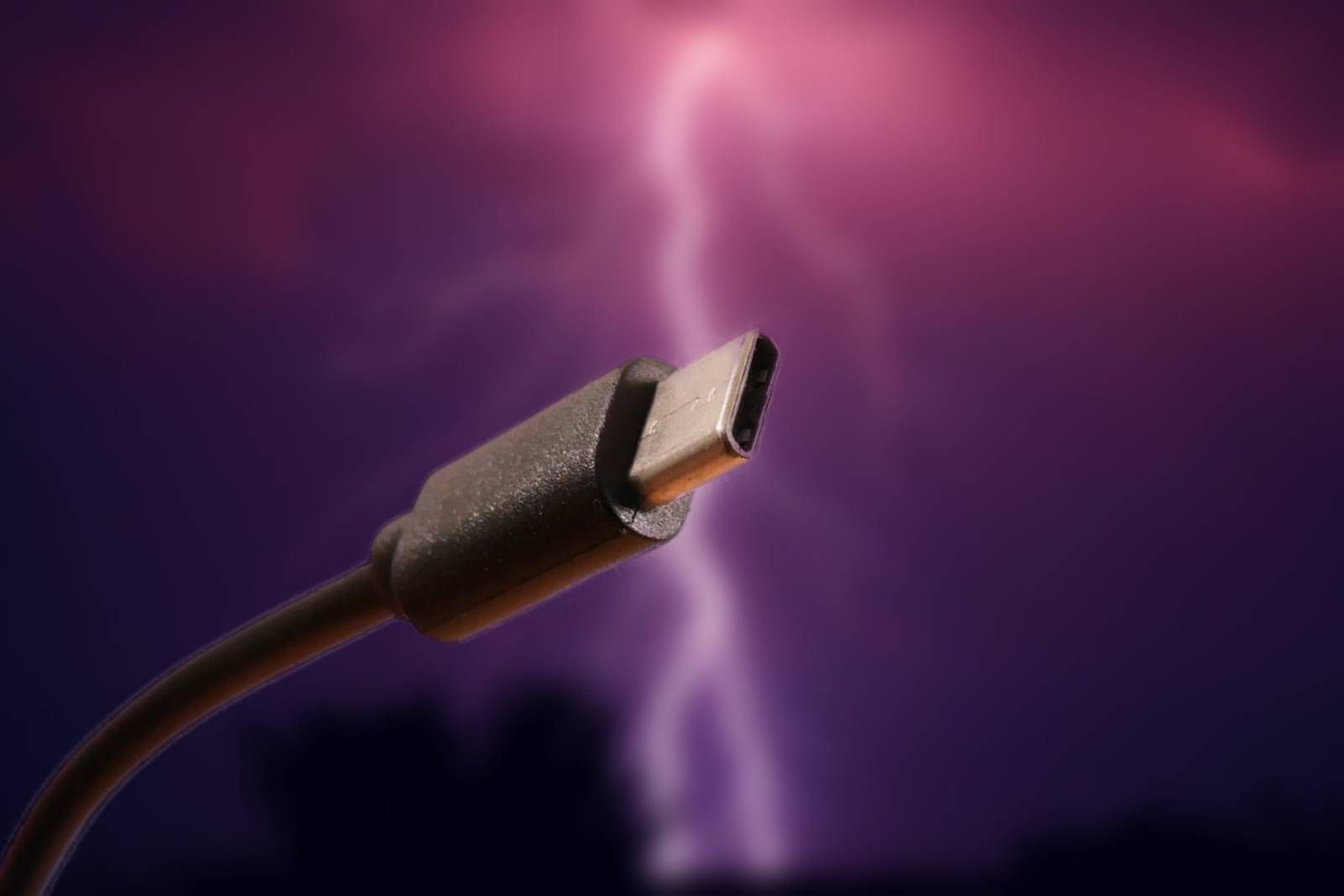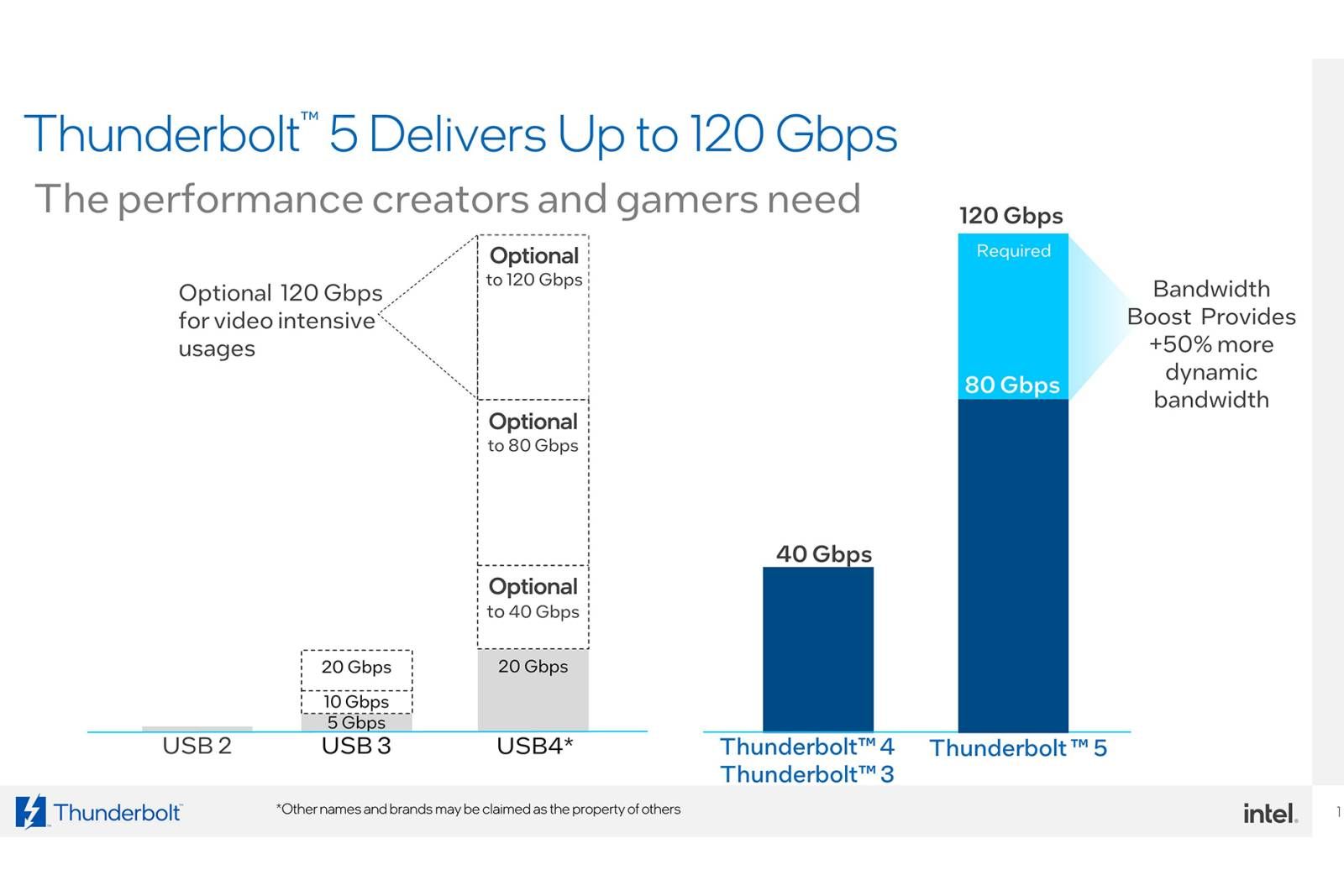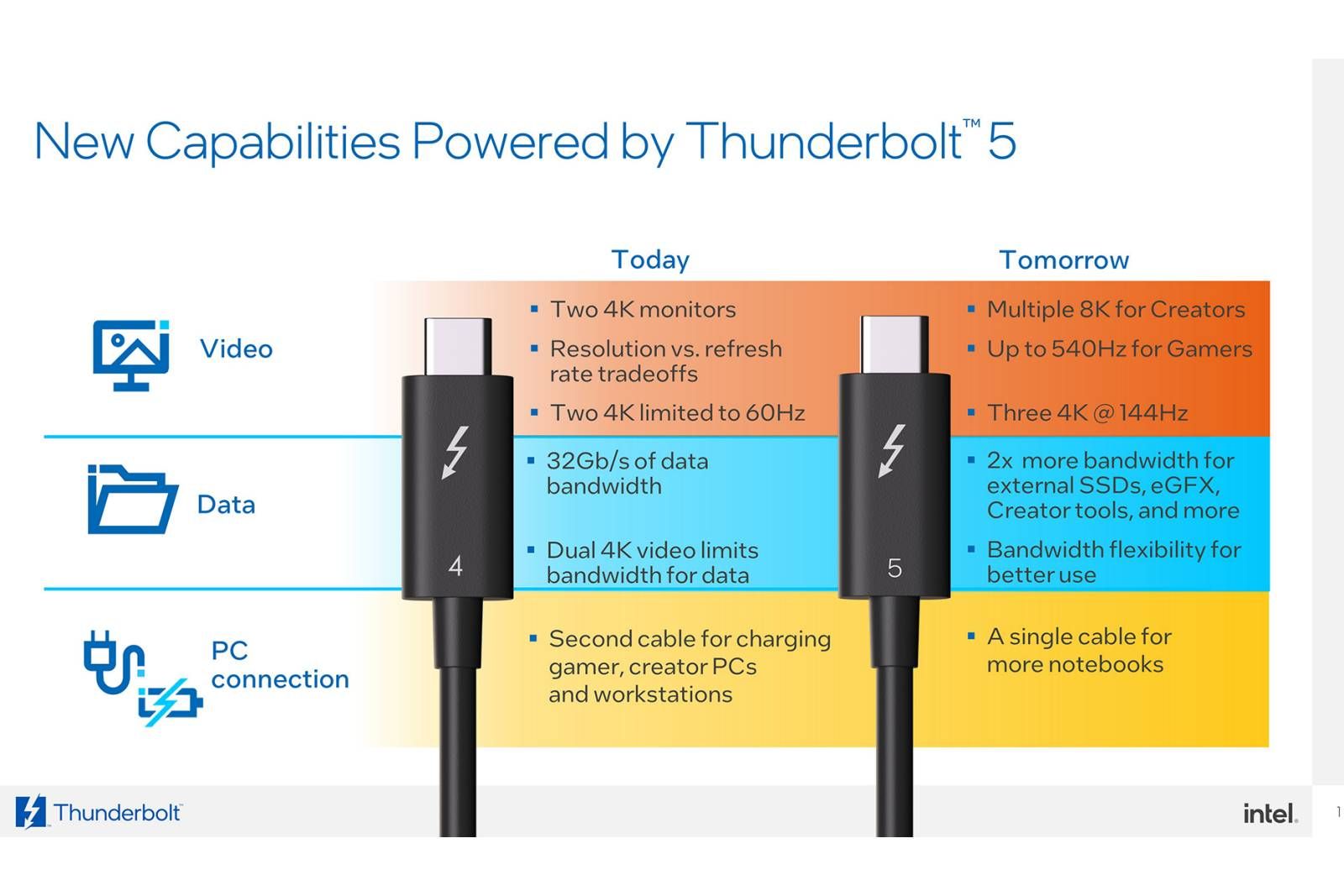Key Takeaways
- Thunderbolt 5 is the latest input/output standard from Intel that offers improved connectivity speed and bandwidth for modern PC users.
- It features double the bi-directional bandwidth and faster storage, making data transfer and video performance much better than previous generations.
- Thunderbolt 5 will be fully backward compatible with older versions, allowing users to keep their old cables and devices while still enjoying some of the benefits of the new standard.
Intel just announced Thunderbolt 5, a new standard designed to build on the speed and performance offered by the previous generation, aptly named Thunderbolt 4. The company has some lofty claims about the improvements offered by its new standard, which probably has you wondering: What exactly is Thunderbolt 5, and how much of an upgrade is it over the previous generation?
Fear not, because we'll break it all down, so you know exactly what to expect from Thunderbolt 5 and how it'll change your technology in the future. If you're curious about the next generation of wired data transfer, read on for the full breakdown.
What is Thunderbolt 5?
The general idea behind Thunderbolt, introduced in 2011, is to allow a laptop or other device to have a single port that can handle everything instead of having a USB, display, sound, and networking connector. This allows laptops to become thinner, thanks to everything being contained in one streamlined port instead of ports of varying sizes. Picture how much thicker an internet port is than a USB-C port, to visualise the significant progress inherent to Thunderbolts.
That brings us to Thunderbolt 5 specifically, the latest input/output standard from Intel designed to be the one cable that can handle everything mentioned above. Like the last couple of generations, Thunderbolt 5 will use USB-C as its connector, which is remarkable for simplicity and overall usability. It will support USB4 V2, DisplayPort 2.1, and PCI Express Gen 4.
It'll be fully backward compatible with previous versions of Thunderbolt and USB. If you choose to upgrade, you will not have to throw away all your old cables and devices. Of course, the older devices won't get the latest speed and performance offered by Thunderbolt 5, but it's nice to be able to hang on to them.
Regarding raw data transfer, Thunderbolt 5 supports up to 80 gigabits per second (Gbps) of bi-directional bandwidth. With a feature called Bandwidth Boost, it will handle up to 120 Gbps, designed to provide the best display experience.
How much better is Thunderbolt 5?
Intel says, "Thunderbolt 5 has been designed to massively improve connectivity speed and bandwidth to ensure modern PC users can enjoy the highest-quality visuals and immersive experiences for years to come."
But what does that mean for raw numbers and actual improvement? It features double the total bi-directional bandwidth (that 80Gbps number mentioned above). Double the PCI Express data throughput means that you can get faster storage than ever before.
Besides the raw speed, video performance is vastly improved. The improvements mentioned above to PCI Express data throughput means external graphics will be much faster and more usable than with previous generations. It has the power to support multiple 8K resolution monitors, compared to the two 4K monitors or one 8K display supported by Thunderbolt 4. It'll support refresh rates up to 540Hz, which is future-proofed for gamers. If you want to go really crazy, it'll support three 4K displays at 144Hz.
Most of the improvements can be summed up by saying that Thunderbolt 5 can transfer more data both into and out of a device. That extra data can be used in many ways outlined above, whether for video display, data transfer, or charging.
When will Thunderbolt 5 be available?
Intel hasn't announced any devices that would feature Thunderbolt 5 yet. The company did say that we'll start to see computers and accessories based on Intel's Thunderbolt 5 controller in 2024. Currently, the controller is code-named Barlow Ridge, so when you start seeing device manufacturers mentioning that name, you'll know it features the added speed and performance of Thunderbolt 5.



